|
Home of the Old Ammo Guy's Virtual
Cartridge Trading Table
Picture
Page
June
2010
An uncommon DWM headstamp.........
 Here's
a cartridge headstamp that I had never seen an example of before, this being a .577/450
Martini-Henry (11.43 x 59R) with the headstamp DWM K
167 K. This case number is on the list of DWM case Here's
a cartridge headstamp that I had never seen an example of before, this being a .577/450
Martini-Henry (11.43 x 59R) with the headstamp DWM K
167 K. This case number is on the list of DWM case
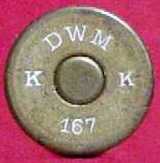 numbers
as English, Martini-Henry, but like many of the cartridges on the list, is
apparently not a very common item. I recently bought a box of 20 of these
along with an assortment of other cartridges that had been stored in
unfavorable conditions for the last 30 or so years, resulting in
deterioration of the box and oxidation of the lead bullets. Fortunately,
these cartridges were coated with grease at the time they were packaged, so
the damage was less than it might have been otherwise. Other cartridges in
the group fared much worse, exhibiting severe case corrosion and oxidation
of their lead bullets. numbers
as English, Martini-Henry, but like many of the cartridges on the list, is
apparently not a very common item. I recently bought a box of 20 of these
along with an assortment of other cartridges that had been stored in
unfavorable conditions for the last 30 or so years, resulting in
deterioration of the box and oxidation of the lead bullets. Fortunately,
these cartridges were coated with grease at the time they were packaged, so
the damage was less than it might have been otherwise. Other cartridges in
the group fared much worse, exhibiting severe case corrosion and oxidation
of their lead bullets.
.
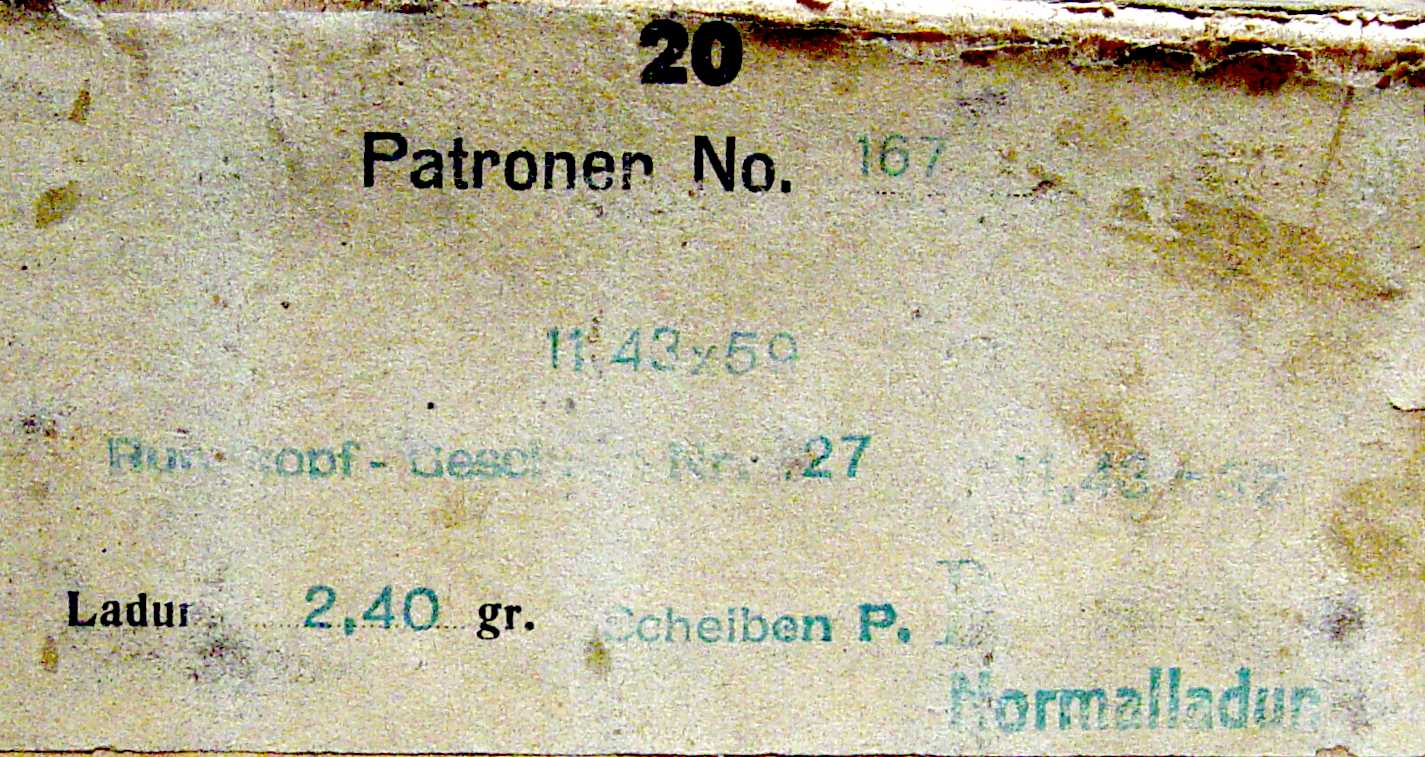
The box label reads:
20 Patronen No. 167
11,43x59
Rundkopf-Geschos Nr. 27
11,43-32
Ladun:
2,40 gr Scheiben P. D
Normalladung
This translates to:
20 Cartridges No 167
11.43x59
Round nose bullet number 27
11.43mm - 32 (grams?)
Load: 2.4 grams (37 grains) target powder
Normal charge
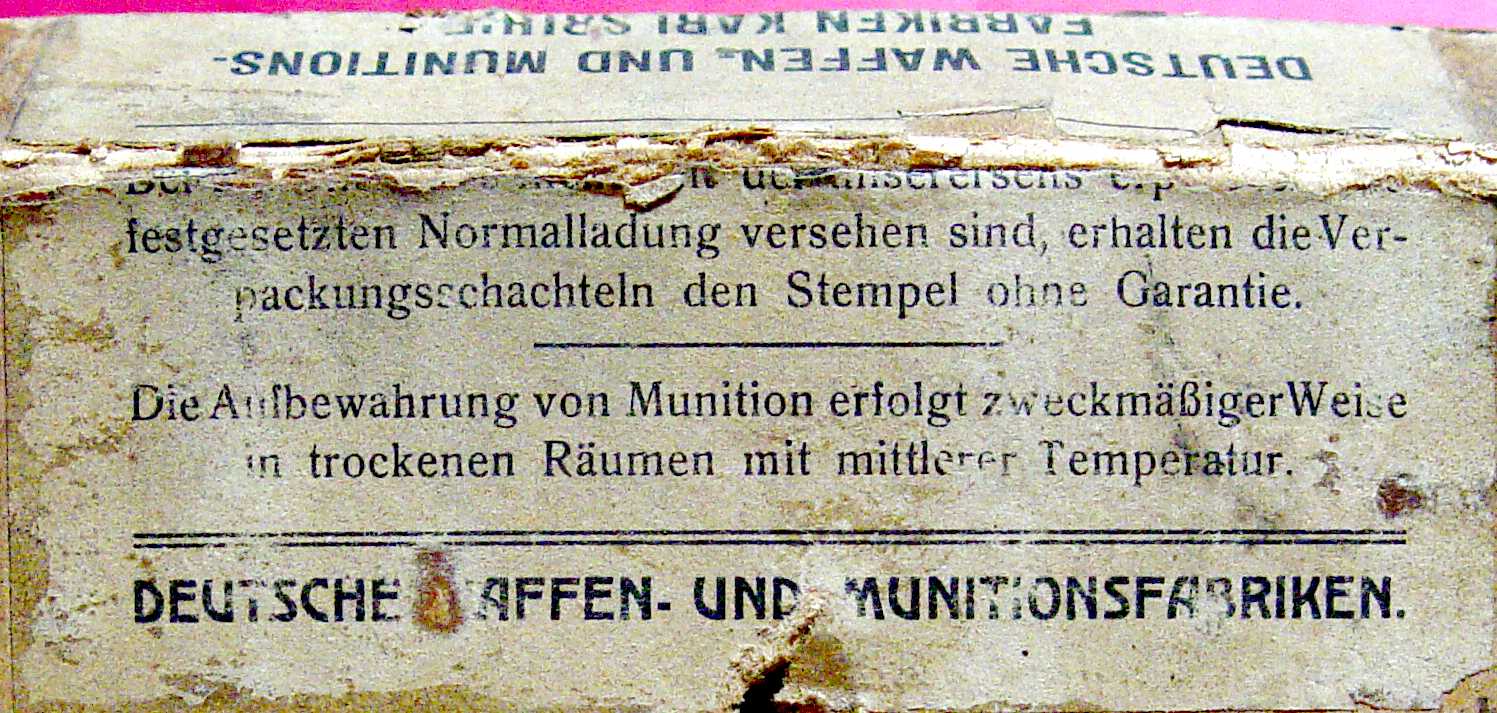 This
portion of the label advises that the cartridges have a normal charge and
provides warranty information, as well as suggesting that the ammunition be
stored in a dry, cool? area, which seems reasonable. This
portion of the label advises that the cartridges have a normal charge and
provides warranty information, as well as suggesting that the ammunition be
stored in a dry, cool? area, which seems reasonable.
.
.
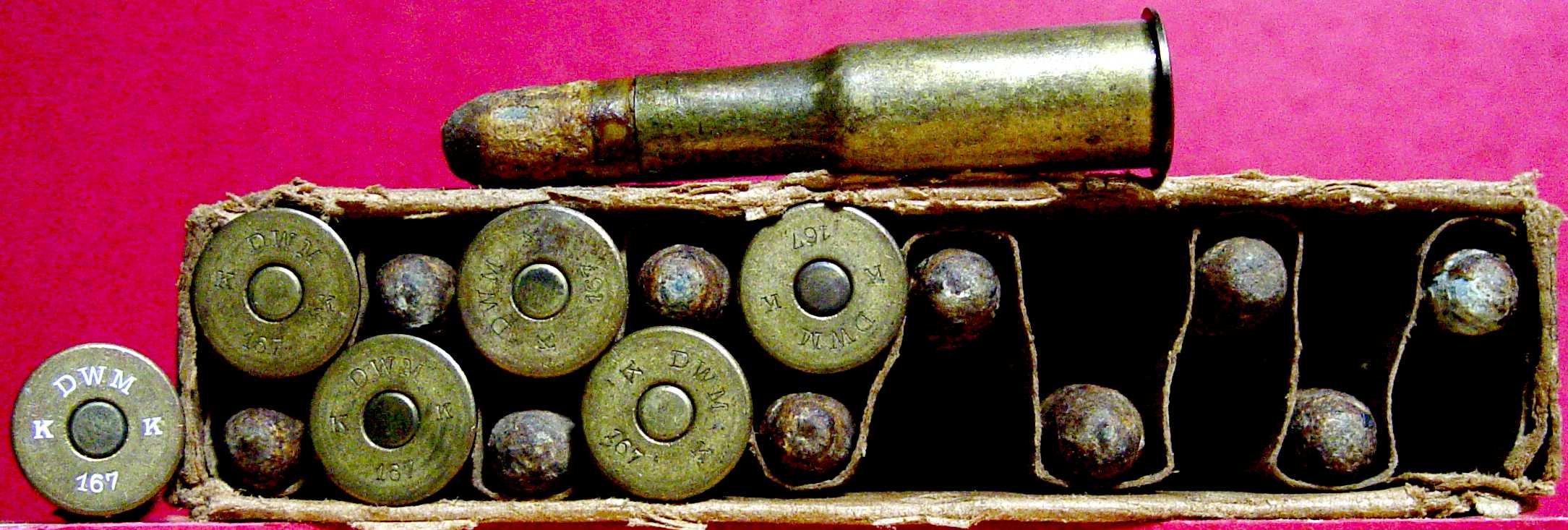 The
rather thick, seemingly baked-on coating of grease is evident on the
bullets in this picture. The
rather thick, seemingly baked-on coating of grease is evident on the
bullets in this picture.
It is interesting that these are smokeless cartridges, loaded with a
yellow-colored powder; I would have expected them to be black powder.
.
.
An all-plastic Winchester-Western shotgun
shell.....
.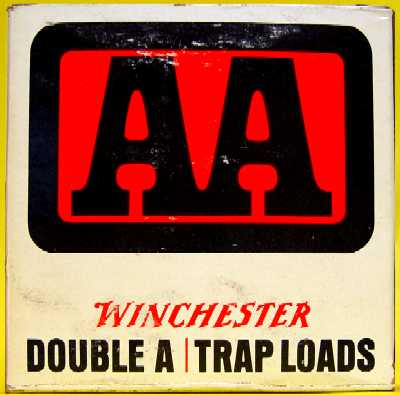 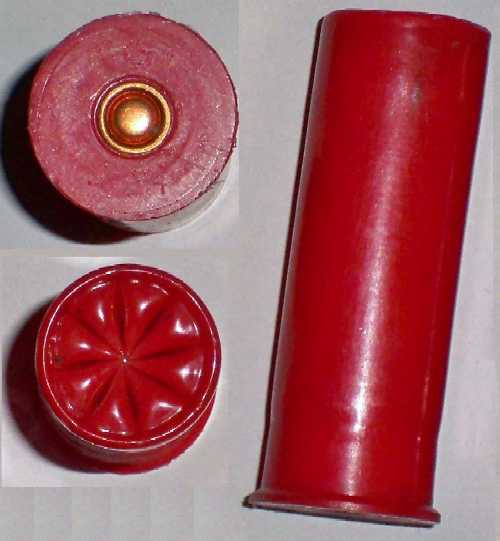 Here
is an interesting box of shotgun shells made by Winchester-Western, these
being of all-plastic construction, lacking the brass head that is typically
found on a shotgun shell. I got these from a former employee of
Winchester/US Repeating Arms Company who worked in their product service
department. Boxes of these plastic shells were being disposed of, a number
of them having been sold to one of the company gunsmiths for use at a trap
shooting event he was going to. The employee that I got them from purchased
five of the boxes. He was told by a Here
is an interesting box of shotgun shells made by Winchester-Western, these
being of all-plastic construction, lacking the brass head that is typically
found on a shotgun shell. I got these from a former employee of
Winchester/US Repeating Arms Company who worked in their product service
department. Boxes of these plastic shells were being disposed of, a number
of them having been sold to one of the company gunsmiths for use at a trap
shooting event he was going to. The employee that I got them from purchased
five of the boxes. He was told by a
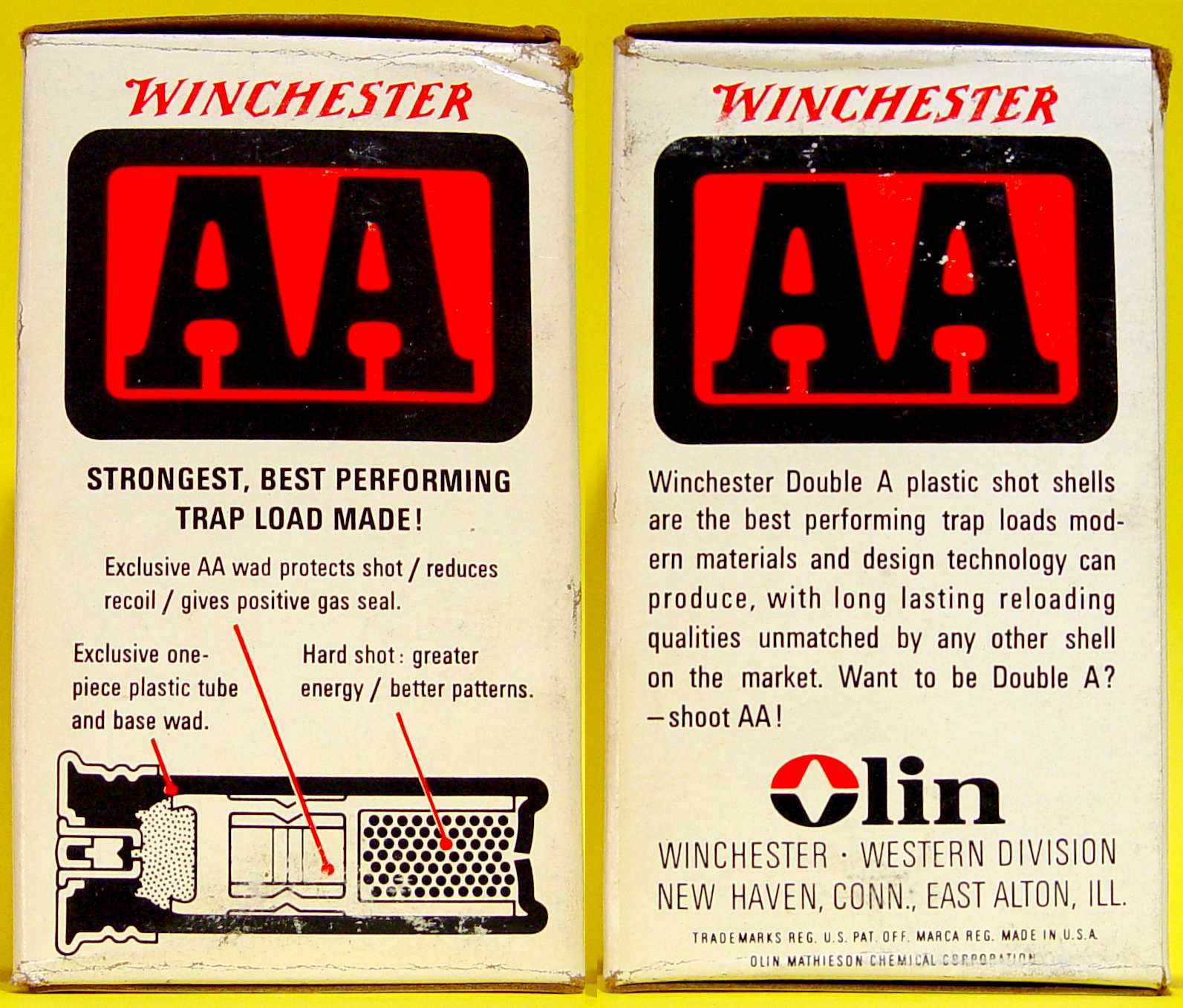 supervisor
that at one time the shells were being used to function fire shotguns on the
production line. supervisor
that at one time the shells were being used to function fire shotguns on the
production line.
The company address shown on the side of the box is Winchester-Western
Division, Olin-Mathieson Chemical Corporation, which was the company name
from 1954 to 1969, after which the name was changed to Winchester-Western
Division, Olin Corporation. This box has the 'Keep Out of the Reach of
Children' warning on the front, which was required on all ammunition
beginning in 1962. So, these plastic shells were most likely made between
1962 and 1969, although it is possible that they were made at a later date,
and packed in obsolete pre-1970 boxes.
 The
box was not originally intended for these all-plastic
shells, but rather for standard Double A trap loads, as is obvious from the
diagram of the shell on the side panel,
which was drawn with a separate head. What does differentiate the box from
those that contain standard trap loads is the code E -O-4O12 on the top of
the box in the area usually used for indicating the powder charge and the
shot size and weight. I suspect The
box was not originally intended for these all-plastic
shells, but rather for standard Double A trap loads, as is obvious from the
diagram of the shell on the side panel,
which was drawn with a separate head. What does differentiate the box from
those that contain standard trap loads is the code E -O-4O12 on the top of
the box in the area usually used for indicating the powder charge and the
shot size and weight. I suspect
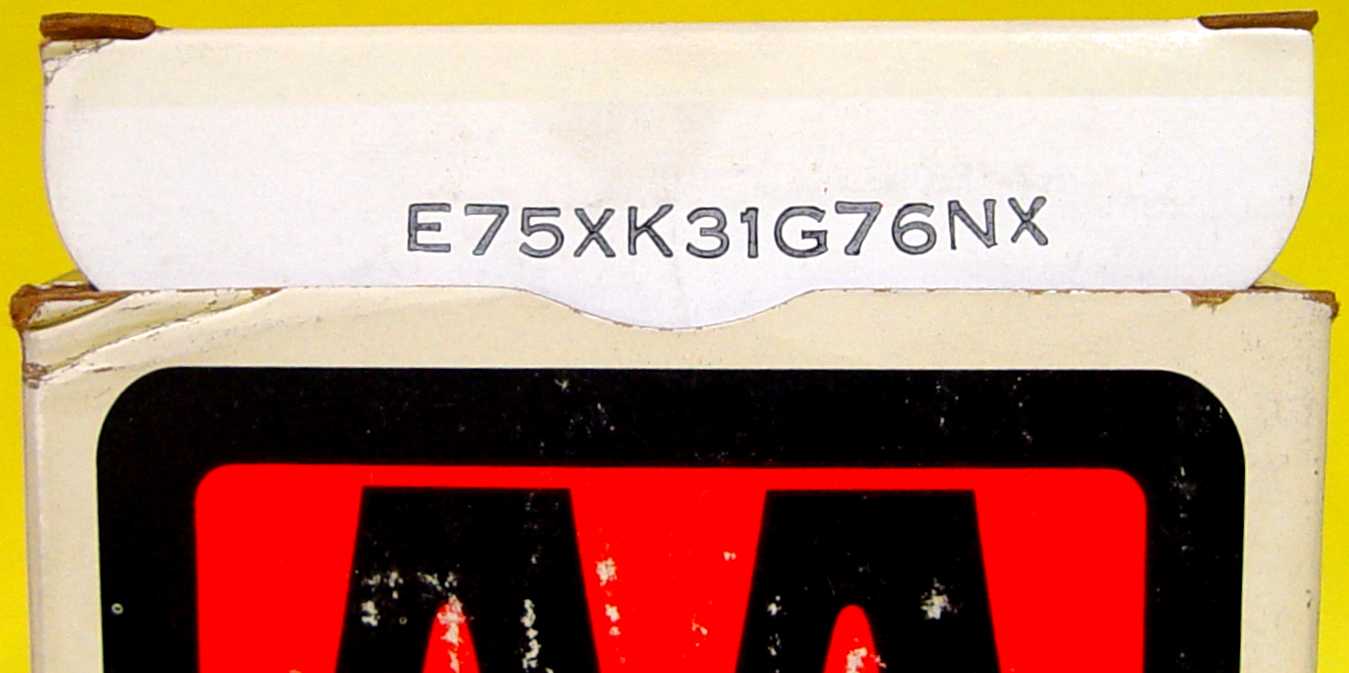 the
'E' indicates an experimental product. The lot number on the end flap also
starts with the letter 'E', possibly another reference to the experimental
nature of the shells. the
'E' indicates an experimental product. The lot number on the end flap also
starts with the letter 'E', possibly another reference to the experimental
nature of the shells.
The shells do not have headstamps; instead, they are are lightly marked
with the letters 'FGC' at the 12 o'clock position on the head and 'AEP' at
the 6 o'clock position. The letters appear to be scratched on the heads by
hand. Under magnification, however, the
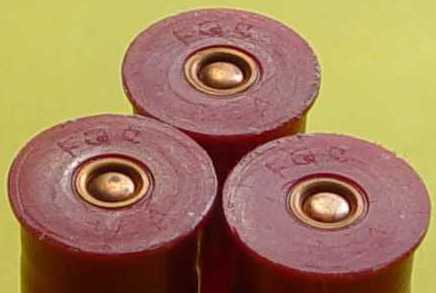 the
markings can be seen to be slightly raised above the surface of the heads,
and they are so consistent from one shell to the next that it is obvious
they were hand-scratched onto the inner face of the mold. the
markings can be seen to be slightly raised above the surface of the heads,
and they are so consistent from one shell to the next that it is obvious
they were hand-scratched onto the inner face of the mold.
All-plastic shells like these also can be found in Winchester boxes
labeled Franchised Gun Club, which explains the meaning of the FGC on the
head. Two examples of these Franchised Gun Club boxes have recently appeared
in the IAA Journal #463 on page 33 and #468 on page 31. The box in issue
#468 has the code E-O-4O12 stamped on its top, the same as the AA box shown
above. I don't know what the AEP stands for; perhaps it has something to do
with the type of plastic used or the production process.
.
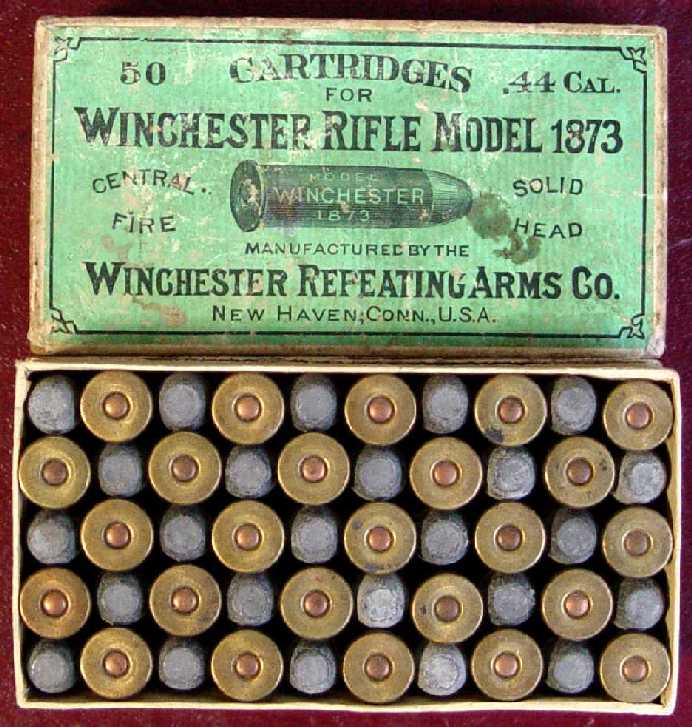
|

 numbers
as English, Martini-Henry, but like many of the cartridges on the list, is
apparently not a very common item. I recently bought a box of 20 of these
along with an assortment of other cartridges that had been stored in
unfavorable conditions for the last 30 or so years, resulting in
deterioration of the box and oxidation of the lead bullets. Fortunately,
these cartridges were coated with grease at the time they were packaged, so
the damage was less than it might have been otherwise. Other cartridges in
the group fared much worse, exhibiting severe case corrosion and oxidation
of their lead bullets.
numbers
as English, Martini-Henry, but like many of the cartridges on the list, is
apparently not a very common item. I recently bought a box of 20 of these
along with an assortment of other cartridges that had been stored in
unfavorable conditions for the last 30 or so years, resulting in
deterioration of the box and oxidation of the lead bullets. Fortunately,
these cartridges were coated with grease at the time they were packaged, so
the damage was less than it might have been otherwise. Other cartridges in
the group fared much worse, exhibiting severe case corrosion and oxidation
of their lead bullets.  Here
is an interesting box of shotgun shells made by Winchester-Western, these
being of all-plastic construction, lacking the brass head that is typically
found on a shotgun shell. I got these from a former employee of
Winchester/US Repeating Arms Company who worked in their product service
department. Boxes of these plastic shells were being disposed of, a number
of them having been sold to one of the company gunsmiths for use at a trap
shooting event he was going to. The employee that I got them from purchased
five of the boxes. He was told by a
Here
is an interesting box of shotgun shells made by Winchester-Western, these
being of all-plastic construction, lacking the brass head that is typically
found on a shotgun shell. I got these from a former employee of
Winchester/US Repeating Arms Company who worked in their product service
department. Boxes of these plastic shells were being disposed of, a number
of them having been sold to one of the company gunsmiths for use at a trap
shooting event he was going to. The employee that I got them from purchased
five of the boxes. He was told by a